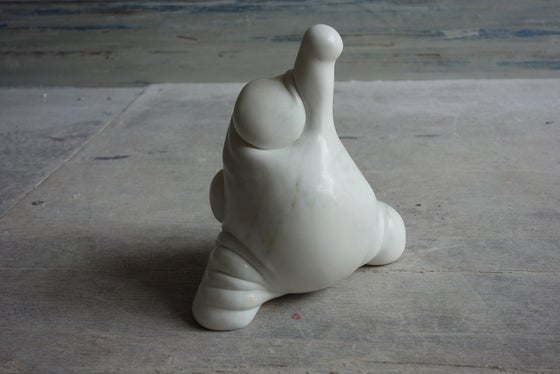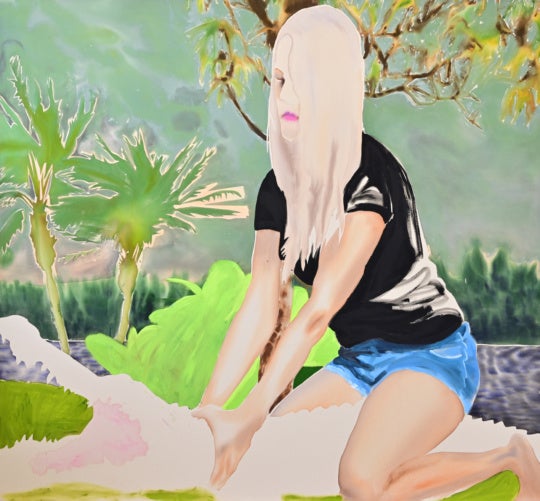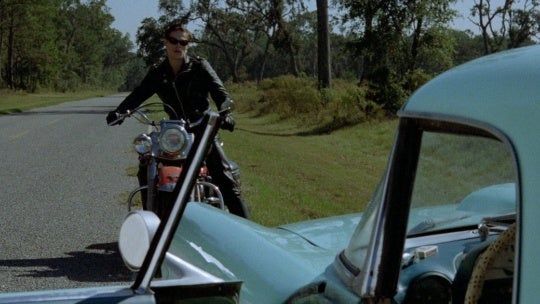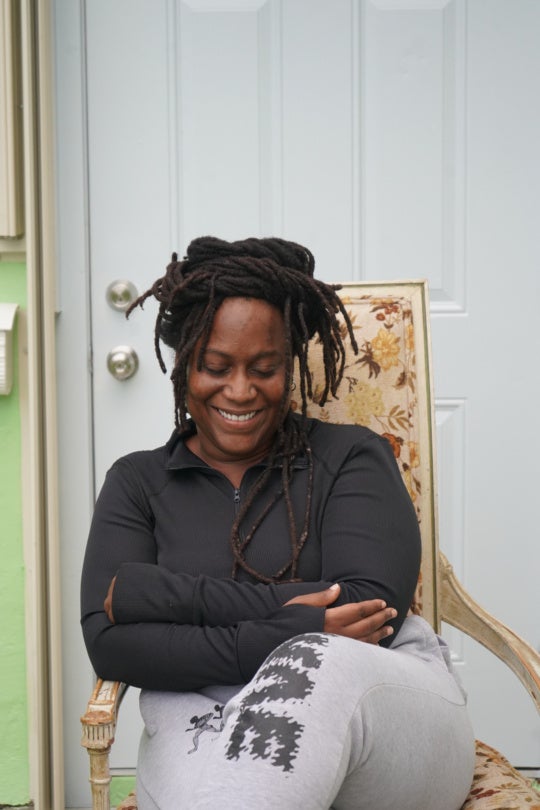
German artists Julia Venske and Gregor Spänle made a splash in September with the installation of their public art sculpture Autoeater in Midtown Atlanta, which features a Fiat Panda being swallowed by a hunk of marble. The bulbous, biomorphic marble sculptures and wall pieces in “Panda 750,” their current show at Marcia Wood Gallery, on view through March 31, are derived from their Autoeater project.
Introduced by Fiat in 1980, the Panda was a cheap no-frills vehicle for city driving. It is the Italian cousin to the Volkswagen Beetle and was very popular among young people and artists. After creating Autoeater, for which they literally cut a vintage Panda in half, the artists had an abundance of car parts in their studio — drive shafts, seatbelts, grill emblems, and more — which have been incorporated into the marble works in unexpected ways.
Venske and Spänle are known for carving marble in such a way that makes it look fluid and belies the weight and mass of the sculpture. The piece Autoflug is a great example. A mass of marble seems to ooze through the seat belt and buckle salvaged from the Panda, wrapping around the strap like thick mucus being slowly pulled down by gravity. The tail emblem of the Panda 750 appears to be embedded in another blob of marble, and another features a ring from the gear shift wedged into a simple fold of marble. The artists call this piece Smurf after the classic cartoon figures, but here it more closely resembles a rotary telephone; but the artists say that’s only because Marcia put it on a little side table.

A series of wall works look like liquid splatters of marble shot out of a cannon onto the gallery walls. Their groovy shapes would go well with Eero Saarinen Tulip chairs in ’70s orange. Their relatively small scale makes them seem a bit lost on the expanse of wall, but their diminutive size and decorative appeal also makes them imminently sellable —more so than the large, heavy works Venske and Spänle are known for.
Notably, the only figurative piece the duo has is on view here; it references the black power salute made by Tommie Smith and John Carlos during their medal ceremony at the 1968 Summer Olympics.
Many works by Venske and Spänle tend to have an erotic, sometimes lurid, tone. Depending on how you look at them, the marble can take on the voluptuous folds of a woman, à la Ingres’s La Grande Odalisque. The simpler and rounder the sculptures are, the more titillating they become. But some pieces evoke less noble forms—an uncircumcised penis, the excretory systems of amoebas, or chitlins. None of the new works in this exhibition have the more lurid shapes, but venture out to the gallery’s back patio and you’ll see Myzot Litischa and Myzot Uwemba from a 2014 show that definitely do.
When most viewers think of expertly carved marble, images of Greek and Roman cherubs and goddesses may come to mind, but Venske and Spänle take the same challenging shapes—folds, curves, crevices, drips, etc.—and reimagines them in abstract terms. Marble sculptures is a very niche field, and Venske and Spänle keep the tradition alive in a modern and amusing way.




